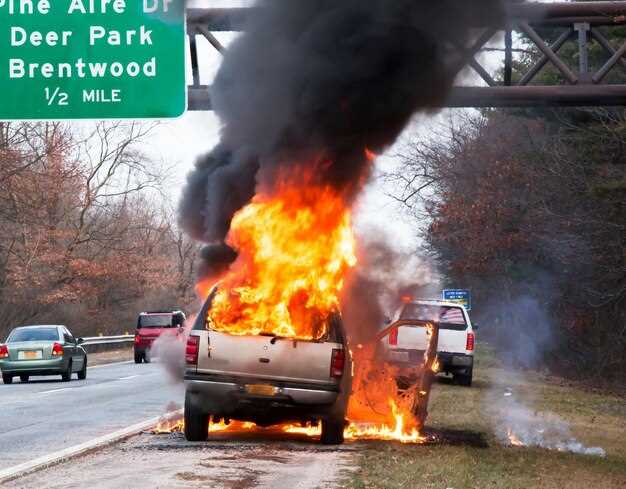
In the adrenaline-fueled world of off-road motorsports, the excitement of racing can often overshadow the critical importance of fire safety. These events, set against rugged terrains and fueled by high-performance vehicles, come with inherent risks, including the potential for fires. Understanding and implementing fire safety protocols is essential not only for the participants but also for the safety of the crew and spectators.
Effective safety measures begin with clear rules regarding fire preparedness and response. Every team should have a comprehensive plan that includes the placement of fire extinguishers in accessible locations. This proactive approach ensures that in the event of a fire, whether due to mechanical failure or an accident, the response can be immediate and effective. Regular training sessions on using an extinguisher can make a significant difference in minimizing fire-related injuries and damage.
Moreover, these safety protocols extend beyond just having equipment at hand. They involve educating all participants about the different types of fires–such as those caused by gasoline or electrical failures–and the corresponding extinguishing methods. By adhering to these rules, the off-road motorsports community can better protect itself while enjoying the thrill of competition.
Understanding Fire Extinguisher Types and Usage in Motorsports

In the realm of off-road motorsports, fire safety is of paramount importance. Competitors must be well-versed in the various types of extinguishers available and their effective usage. Proper knowledge and readiness can mean the difference between minor incidents and catastrophic outcomes.
Fire extinguishers are classified into several types based on the nature of the fires they are designed to combat. The most relevant for motorsports include Class B extinguishers, which are suitable for flammable liquids such as gasoline and oil, commonly encountered during races. Class A extinguishers can also be useful; they handle fires involving solid combustibles like wood or paper, though these incidents are less frequent in an off-road setting.
A key component of fire safety regulations in motorsport is the requirement for competitors to have accessible extinguishers in their vehicles. Typically, a minimum of a 2.5-pound Class B extinguisher is mandated by racing rules. However, some events may require larger extinguishers or additional units depending on the nature of the race and the environment.
The correct usage of a fire extinguisher begins with the acronym PASS: Pull the pin, Aim at the base of the fire, Squeeze the handle, and Sweep from side to side. Understanding this method is crucial, as incorrect handling can lead to ineffective suppression or injury.
In summary, recognizing the right type of extinguisher and adhering to usage protocols are essential components of fire safety in motorsports. Competitors are encouraged to familiarize themselves with these rules to ensure not only their safety but also the safety of fellow participants and spectators.
Implementing Fire Safety Rules During Off-Road Racing Events
In the high-octane world of off-road racing, ensuring the safety of participants and spectators is paramount. Effective implementation of fire safety rules is essential to minimize risks associated with fire hazards during races. These events often take place in remote locations where rescue services might be delayed, making proactive measures crucial.
Firstly, race organizers must assess the specific fire risks associated with off-road vehicles. This includes evaluating fuel types, vehicle modifications, and environmental conditions. Establishing clear rules regarding the use of fire-retardant materials in vehicle construction can significantly reduce the likelihood of fire incidents.
Secondly, every participant should be required to undergo training that covers fire safety protocols. This includes familiarization with fire extinguishers, safe evacuation procedures, and the use of personal protective equipment. During the race, having designated safety personnel trained in firefighting techniques can aid in a rapid response to any fire emergencies.
Additionally, participants must be mandated to carry fire extinguishers within their vehicles. The rules should specify the type and size of extinguishers, ensuring they are easily accessible in case of a fire. Regular inspections of these safety equipment items should be conducted to ensure they are in good working condition.
Moreover, pre-race briefings should include fire safety reminders, emphasizing the importance of following established rules. Race marshals should be vigilant in monitoring for unsafe behaviors that could lead to fire hazards, such as negligent fuel handling or inappropriate disposal of flammable materials.
Finally, creating a clear emergency plan is vital for ensuring a coordinated response in the event of a fire. This plan should outline evacuation routes, point of contact for emergency services, and designated assembly areas for both participants and spectators. By implementing these fire safety rules diligently, off-road racing events can maintain a thrilling yet safe atmosphere for all involved.
Training and Preparation for Fire Emergencies in Off-Road Motorsports

Effective training and preparation are essential to ensuring safety during off-road motorsports events. Fire emergencies can arise from various sources, including fuel spills, mechanical failures, or collisions. Adherence to fire safety protocols is vital to minimize risks during a race.
Team Training should encompass not only driving skills but also emergency response measures. All team members, including drivers and pit crew, need to be familiar with the rules governing fire safety. Regular drills simulating fire scenarios help teams react promptly and efficiently. These drills should cover the use of fire extinguishers, evacuation procedures, and communication strategies to alert emergency services.
Additionally, teams should ensure that all vehicles are equipped with necessary fire suppression systems. Knowledge of these systems and their operation is crucial for quick action in case of a fire outbreak. Regular inspections prior to races can identify potential risks and ensure compliance with safety rules.
Driver Education is also a key component of preparation. Participants should be trained to recognize early signs of fire and understand the importance of promptly exiting a vehicle in danger. Pre-race briefings should include discussions about possible fire hazards specific to the venue and guidelines on how to handle such situations effectively during the race.
By prioritizing training and preparation, teams can significantly enhance their readiness for fire emergencies, ensuring a safer environment for all participants involved in off-road motorsports.




